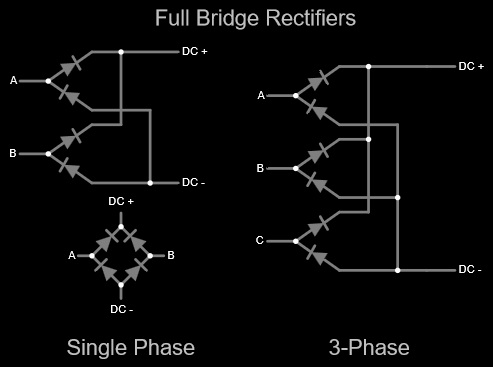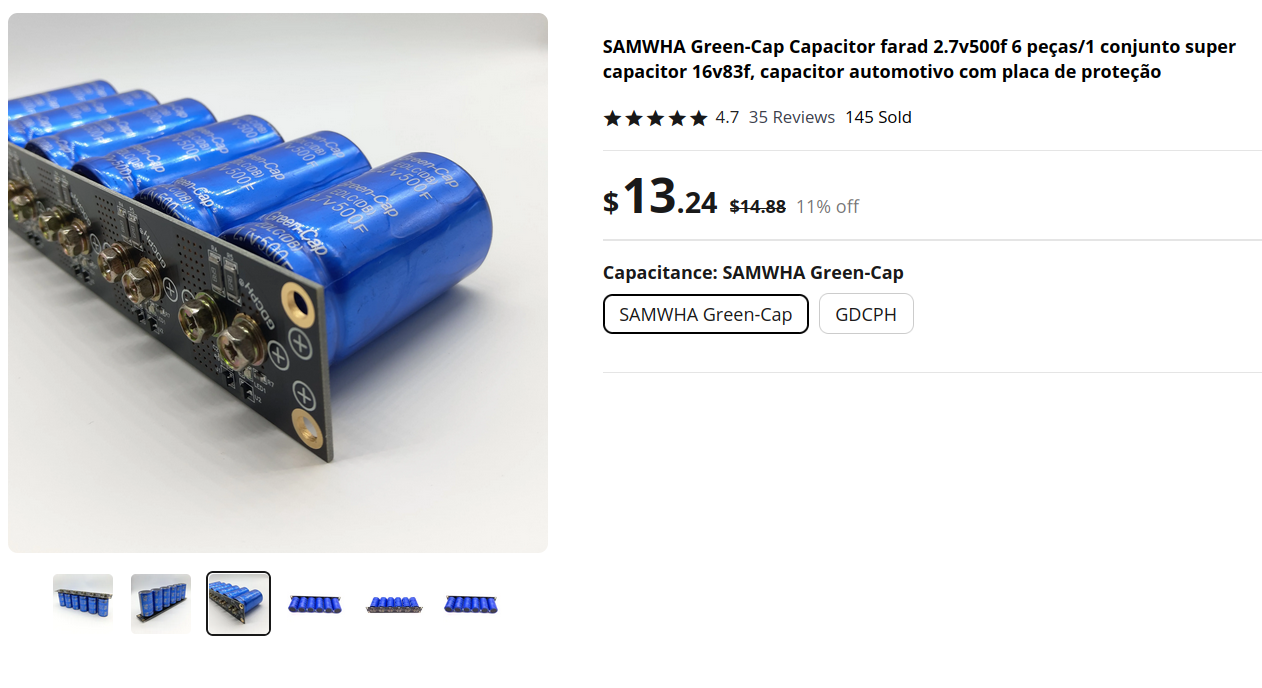The thing about generators is that when they stop turning, they stop working. If you are powering a laptop with no battery, such as the kind I often find in the trash, it means that if you stop pedaling for even a moment, your laptop will die.
Also, I don't know if you have ever pedaled anything before, but the power comes in pulses from each leg. A light bulb would be rather flickery if powered directly from the generator, unless you are very careful to pedal smooth enough so that the generator is always at a constant speed.
Also, the output of the generator is 3 phase AC. While it is fine to put a light bulb across two of the phases and use it like that, we are missing out on some of the generating capacity that way. Most of the stuff I want to power does not use 3-phase AC anyways, so first let's convert it using everyone's favorite diode arrangement, the full bridge rectifier.
If you have never come across the 3 phase version before, it's just like a single phase version, just with 2 extra diodes.

You put a pair of diodes on each phase. One of the diodes captures the positive side of the waveform, and the other one captures the negative side. Collect the negatives and positives, and you've got DC.
These are available in pre-made packages just like the square 4 terminal power rectifiers you can find, these just have 5 terminals - 2 for the DC output and 3 for the 3 phases. I bought a few off the usual suspects.

The ratings on these might be a bit dubious, but should be well within the comparatively measly power we could ever hope to get out of a bicycle.
We have DC now, but what about storage? I could use batteries; just connect one directly to the output of the rectifier, but it rather violates my rule about having non-human power. Batteries, of any kind, must be maintained above some minimum voltage. Drain one to zero volts, and it is likely to damage the cell. But, having a measurable voltage present at all times sure feels like there is non-human power included on board, even if the usable energy available in a "discharged" battery is small.
Also, batteries don't have all that much voltage range available, meaning that we would have to get the generator up to a certain minimum speed just to be able to charge one, and could not go too fast or risk overcharging it.
Instead, I decided to look into supercapacitors, which wouldn't you know it, are also available from Aliexpress.

These are 6x 500F capacitors in series, each with its own discharge circuit built in, which activates if the capacitor voltage gets too high. Supercapacitors are generally only rated for a few volts, in this case, 2.7. The overvoltage protection is not too strong though, taking 10s of seconds after coming on to drain the capacitor voltage back within spec.
Capacitors can be drained all the way to zero, and operate at any voltage (meaning arbitrary generator speed) up to their spec. They can also accept and dump lots of current; both of these features make for an ideal choice for this project.
I started out with 2 of these prebuilt units, but eventually upgraded to 3 after I realized my preferred cycling speed put the generator voltage above the limit for just 2 units.
So that's 18 capacitors in series, for a total of about 27 farads of capacitance at up to 48 volts. We can use the regular capacitance formula to find that, at full charge (48 volts), a capacitor bank of this size will hold about 31 kilojoules. That's about 8.5 watt-hours, so we can power something that is 8.5 watts, for an hour.
How much is that? Well, a single AA battery contains around 2-3 watt-hours, so our whole capacitor bank, when full, contains roughly 3 AAs worth of energy. That doesn't sound like much, but in potential energy terms that's enough power to lift a 1kg weight nearly 1.9 miles into the air!
Compared to the typical laptop battery, which might be around 50 watt hours, it's enough to stop pedaling and keep our laptop running for 10s of minutes. I feel like this is a pretty good time resolution for this project - it's not so little storage that all we can handle is a few seconds, but not so high that we might spend several hours or even days charging up a massive sealed lead acid battery, which can hold hundreds of watt-hours. It should add a much more human timescale to this project.
 alnwlsn
alnwlsn
Discussions
Become a Hackaday.io Member
Create an account to leave a comment. Already have an account? Log In.